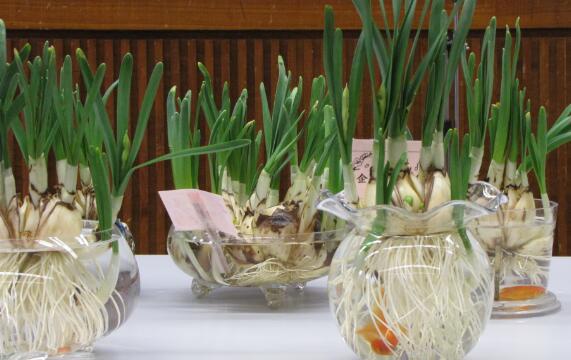How to reproduce impatiens, the propagation method / sowing / cutting of impatiens
Impatiens, is a more common kind of people's life, is a lot of plants like to cultivate a kind of plant. Flowering is also its most beautiful moment, generally good reproduction can make its florescence longer, so how to reproduce impatiens? In fact, there are roughly two methods, about the breeding methods of impatiens need to pay attention to which, the following editor to take you to understand.
How to propagate / sow / cuttage impatiens

On the Internet, many people say that impatiens cannot be cutted. in fact, this statement is wrong, because according to records, there are successful cases of impatiens cutting. in fact, how to reproduce impatiens can be roughly divided into two types: sowing and cutting. you can move on to the details.
II. Propagation methods of Impatiens balsamina
Sowing and reproduction
1. Early sowing
Sowing is one of the most common breeding methods of impatiens. Generally speaking, it can be sowed from March to September every year. Impatiens should first wet the seedbed with water before sowing, because the seeds of impatiens are relatively small. If the flowers watered after sowing are easy to wash away the seeds, so we should remember this.
Note: if you choose to sow seeds when the summer weather is relatively hot, you must do a good job of shading. Generally, it is best to put them in a semi-shaded place, which can ensure that impatiens can absorb sunlight and not be exposed to the sun. So we must master this degree.
two。 Late care
If you want to breed impatiens well, in addition to doing well in the early stage, the care in the later stage is also very important. The growing period of impatiens is usually from April to September every year. Generally, it will sprout and grow leaves about a week after sowing. After it is planted, it is best to top it, so as to enhance the branching ability of impatiens. Cut off the flower stalk in time after the impatiens bloom, which can make the impatiens blossom more prosperous.
Note: in addition to the above, watering is necessary when raising any plant, because it is the main nutrient of the plant, which should be watered more in summer and less in winter.
Cuttage propagation
Cutting is a relatively rare breeding method of impatiens, and even many people think that it can not be cut, but the editor found a lot of information or found a successful case of impatiens cutting, the method is as follows, you can learn about it.
Impatiens cuttings generally choose a seedling hole plate with a specification of 10 × 10, and the substrate can choose peat ash, sawdust and vermiculite, and their proportion can be mixed at 4:3:3, and after the mixing is completed, it can be loaded directly into the seedling hole plate. Then cuttings are taken from the mother of Impatiens balsamina. Here, note that the cuttings must retain three nodes. Be sure to water immediately after cutting. according to this method, it can take root in 10-14 days, and the survival rate of rooting is more than 98%.
Sowing and Cuttage Propagation of African Impatiens
African impatiens commonly used reproduction methods, there are two propagation methods of sowing and cutting, the two propagation methods can be carried out throughout the year, generally better reproduction in spring and autumn, flower friends can combine their own conditions, choose appropriate breeding methods, the following respectively sort out African impatiens seed sowing and cutting propagation methods, hoping to help flower friends better breed African impatiens.
Propagation methods of African impatiens 1. Sowing and propagation methods
African impatiens can be sown all year round to prepare the seeds of African impatiens, which are small, 1700 to 1800 seeds per gram, and are sown with a mixture of sterilized culture soil, rotten leaf soil and fine sand. The optimum temperature for germination was 22 ℃ and germinated 15-20 days after sowing. The optimum temperature for germination of New Guinea Fengxian was 24: 26 ℃, and germinated 7-14 days after sowing.
1. The method of cutting propagation
The cuttage propagation of African impatiens can generally be carried out throughout the year, but it is the best in spring and autumn. First, the sturdy top branches with a length of 10 cm to 12 cm are selected, and the branches are inserted into the sand bed at 20 to 25 degrees. Generally, it takes about three weeks after cutting to take root and survive.
Will New Guinea impatiens bear seeds? How do New Guinea impatiens breed?
[FAQ] will New Guinea impatiens bear seeds? How do New Guinea impatiens breed?
[expert answers]
Photo: new Guinea Impatiens
New Guinea Impatiens can be propagated by cutting and sowing, so New Guinea Impatiens will bear seeds. In the breeding process of New Guinea impatiens, when blooming, we should pay attention to artificial pollination, so that it will bear fruit, but the seed yield is very low.
(1) cutting
Cut the sturdy branches from the mother plant, the length is about 6-7 cm, cut the cut flat, leave 5-6 leaves, and remove the rest of the lower leaves. When the cuttings were dipped in 2000-fold neacetic acid solution, the rooting could be promoted. In the first 3 days of cutting, the seedling plate can be covered with plastic film to maintain 95% air humidity, and ventilation can be turned on for 10 minutes at noon and afternoon. The air humidity decreased gradually after 3 days, and began to take root in about 7-10 days.
(2) sowing
The seeding medium can be mixed with sifted peat soil and sandy soil at the ratio of 3 ∶ 1. High temperature disinfection of the substrate can prevent seedling diseases and do not use second stubble soil to raise seedlings. After the container is fully soaked in water, the seeds are sown on demand, and the seeds are placed flat in the hole, which is covered with a thin layer of vermiculite, which can maintain the environmental humidity of the seeds and fix the seeds. The suitable temperature for seed germination is 22 ~ 25 ℃, and the germination will be completed within 7 ~ 10 days.
[editor's summary]
New Guinea Impatiens is a common indoor decoration flower, but in the process of planting, cutting is the main way of propagation, because there are not many seeds of New Guinea Impatiens. In this article, the editor of the first Agricultural Classic introduces to you the knot of the New Guinea Impatiens Society and the breeding method of the New Guinea Impatiens. I hope it will be helpful to you.
- Prev

How to reproduce daffodils? four propagation methods / lateral bulb reproduction of daffodils are 100% alive.
Daffodil, which grows in autumn and blossoms in winter, is an extremely special and beautiful flower, which is deeply loved by flower friends. However, the flowering period of daffodils is very short, no matter how long it takes, and it will have to wait more than 2 years for it to blossom again after flowering, so it is very important to master the breeding methods of daffodils.
- Next

How to propagate primroses, propagation methods of primroses (cuttings / strips / strips)
Primrose, which is famous for blooming earliest among flowers and withering before flowers bloom, is a kind of plant with beautiful plant type and bright color, which is deeply loved by flower friends. However, to raise a primrose, even if it blossoms, it is a bit monotonous, so it is very important to master the breeding method of primrose. So how do primroses reproduce?
Related
- Fuxing push coffee new agricultural production and marketing class: lack of small-scale processing plants
- Jujube rice field leisure farm deep ploughing Yilan for five years to create a space for organic food and play
- Nongyu Farm-A trial of organic papaya for brave women with advanced technology
- Four points for attention in the prevention and control of diseases and insect pests of edible fungi
- How to add nutrient solution to Edible Fungi
- Is there any good way to control edible fungus mites?
- Open Inoculation Technology of Edible Fungi
- Is there any clever way to use fertilizer for edible fungus in winter?
- What agents are used to kill the pathogens of edible fungi in the mushroom shed?
- Rapid drying of Edible Fungi

